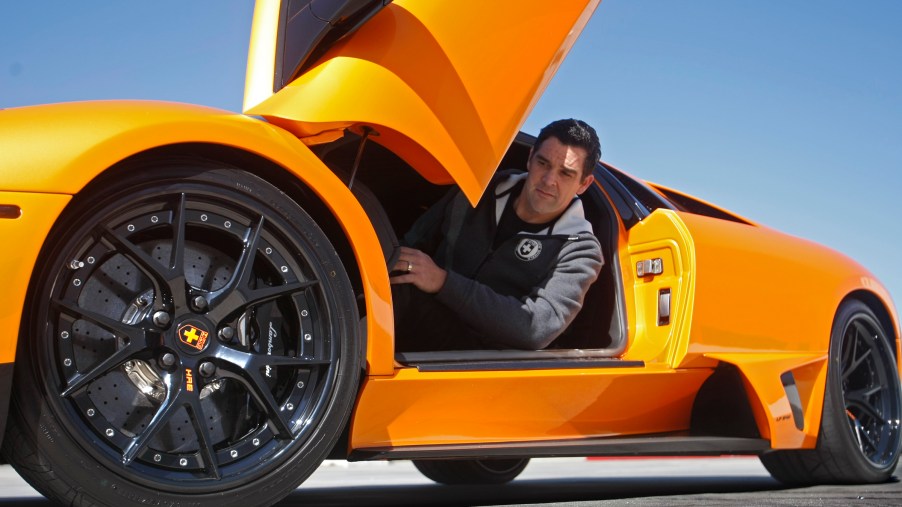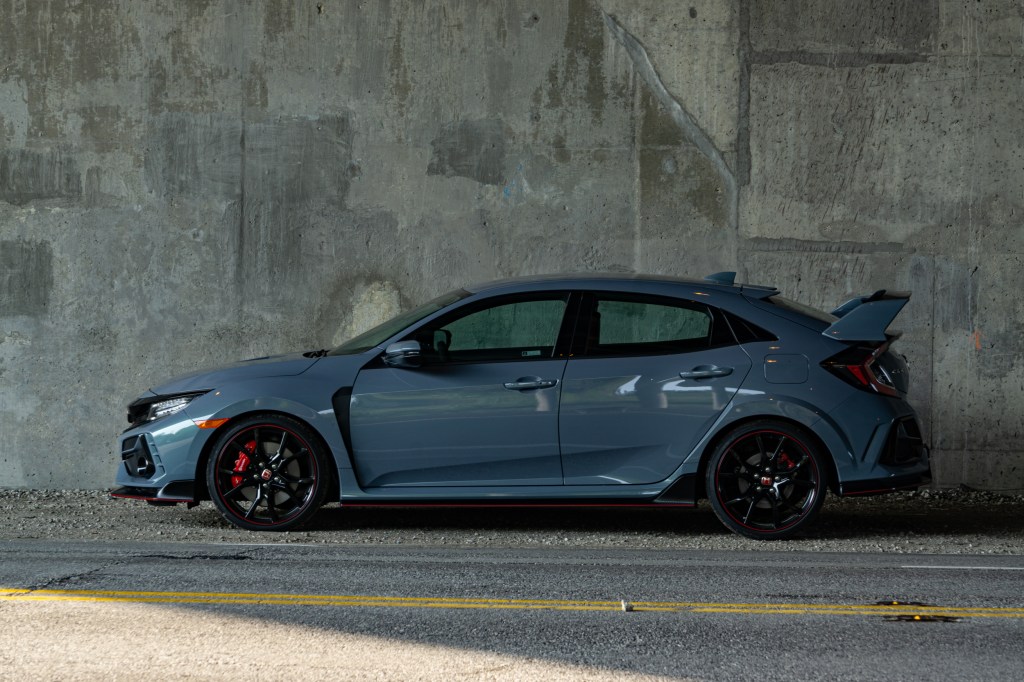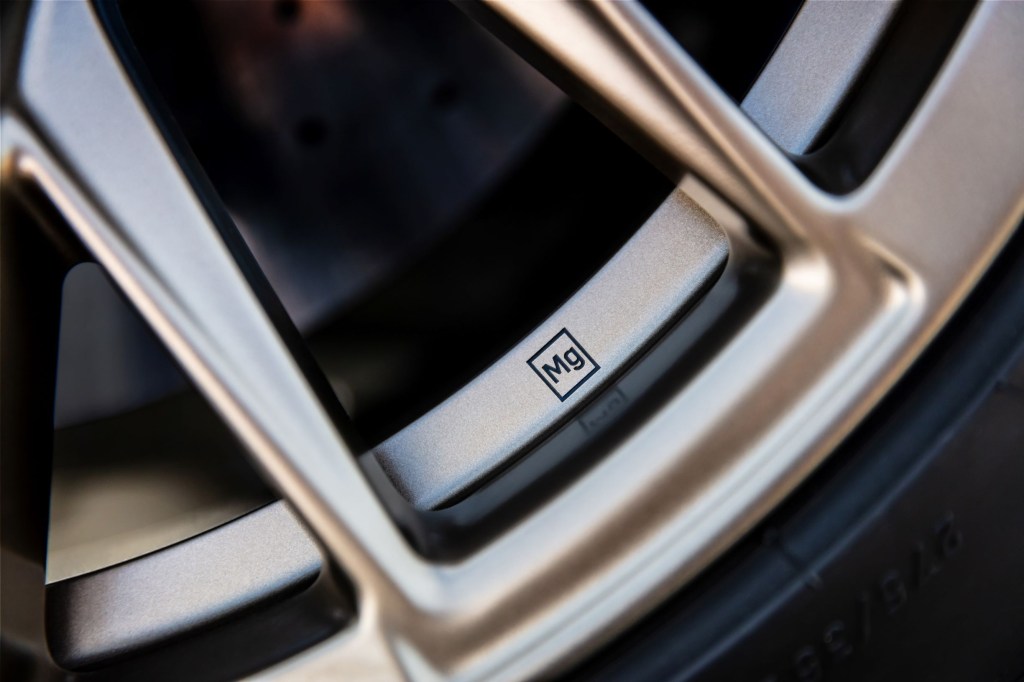
When Are Aftermarket Wheels Worth It?
Changing up your wheels through the aftermarket is one of the most common vehicle modifications. But all too often these non-factory wheels end up being more trouble than they’re worth. However, that’s usually because people buy them for the wrong reasons. Done properly, aftermarket wheels can be beneficial.
The best aftermarket wheels lower unsprung weight

One of the usual drawbacks of aftermarket wheels, besides cost, is that they ruin your car’s ride quality. That’s especially true if you try to fit bigger wheels in the pursuit of visual flair. Bigger wheels typically mean thinner tire sidewalls and a harsher ride, Road & Track explains. But instead of going for size, what you should be focusing on is the weight. Specifically, unsprung weight, aka ‘unsprung mass.’
Every car’s weight is split into two categories: sprung and unsprung, Autoblog explains. The former is the weight held up by the suspension, i.e., the ‘springs.’ Unsprung weight, in contrast, describes the unsupported mass, CJ Pony Parts explains. That includes your axles, differentials, brake hardware, and your wheels. Naturally, as with any additional weight, increasing unsprung weight—such as with large, heavy aftermarket wheels—slows your car down, Grassroots Motorsports reports. But that’s not the only effect it has.
Besides dampening impacts, your suspension’s job is to keep your vehicle’s tires stuck to the pavement, Cycle World explains. Increasing unsprung weight makes that job harder, especially if the road isn’t in the best condition. That translates to less grip, worse handling, decreased comfort and confidence, and even poorer fuel economy, CarThrottle reports. However, the issues go further than that.
Your wheels, aftermarket or otherwise, along with the axles and brake discs, also fall into the ‘rotating mass’ category, RallyWays explains. And rotating mass is even harder to control than ‘normal’ unsprung weight. Plus, as it increases, not only does it affect ride quality and handling, it also hampers acceleration and increases braking distances, Car and Driver reports.
Finally, because factory and aftermarket wheels are placed at a car’s corners, they also affect its polar moment of inertia. Basically, the more weight at the corners, the harder it is to change direction, Autoweek explains.
So, in short, the most beneficial aftermarket wheels are the lighter-than-stock ones.
Low weight isn’t the only thing you need to consider about aftermarket wheels
However, you can’t just buy the lightest aftermarket wheels you find. As with any tire and wheel upgrade, you need to make sure your car is designed for them. And that doesn’t just mean if they can physically fit within the fenders.

Let’s use the example of the Honda Civic Type R. Although it sits on 20” wheels with thin-sidewall tires, the ride is surprisingly nice. Naturally, though, some owners may be tempted to fit smaller wheels so they can get thicker-sidewall tires.
However, while that would decrease unsprung weight and rotational mass, it wouldn’t necessarily make the CTR better, R&T explains. That’s because Honda, and every other automaker, designs its car’s suspension around a specific range of wheel-and-tire diameters. They often even take wheel stiffness into account, MotorTrend explains.
Putting under- or over-sized aftermarket wheels on a car interferes with its suspension and steering systems. That doesn’t mean you can’t do that, only that it requires special calculations in order to determine the best upgrade. Or, if you plan to do further modifications, an entirely-different suspension setup.
Should you buy them?

Lightweight aftermarket wheels don’t come cheap, even if you don’t use exotic materials like magnesium or carbon fiber. For example, a Fiat 500 Abarth’s stock 16” wheels weigh 18.3 pounds each, Fiat500USA reports. The equivalent aluminum O.Z. Alleggerita HLT wheel, weigh 13.6 pounds, costs $296.62 at Tire Rack at the time of writing. And that’s without the optional TPMS. So, is it worth it?
In terms of handling, acceleration, and ride quality, lighter wheels do make a difference, Car and Driver reports. But where you’ll really feel the difference is on a racetrack or a technical, twisty road. If that’s not the kind of driving you do, you likely won’t feel too much of a change. Though if you’re about to buy a new car, rather than going with lighter aftermarket wheels, just get the smaller wheel-and-tire package.
However, there’s another wrinkle. Earlier I used a 500 Abarth as an example. It’s now discontinued in the US, which means OEM parts will be harder to find. And in fact, the OEM wheels are now more expensive than the lighter aftermarket ones, based on Mopar’s prices. If you need to replace damaged wheels, and the non-OEM ones are cheaper and lighter, it’s a win-win scenario.
Follow more updates from MotorBiscuit on our Facebook page.


